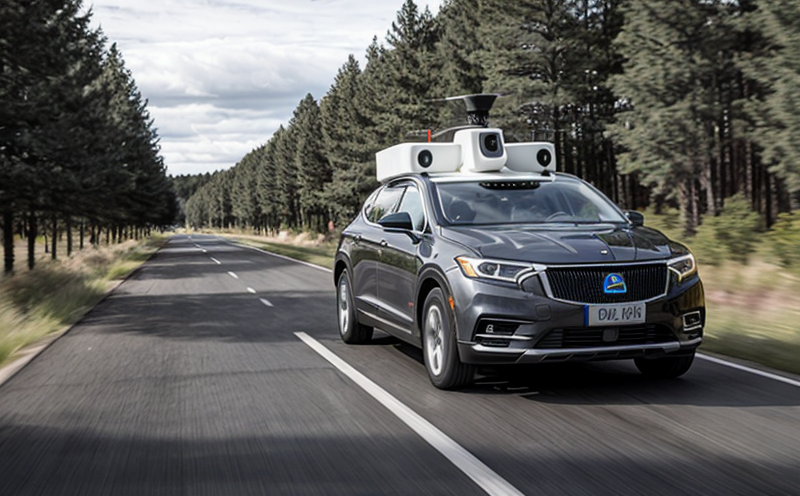SAE J3018 Human Factors Safety in Autonomous Navigation Systems
The SAE J3018 standard provides a framework for ensuring the safe integration of human factors into autonomous navigation systems. This standard is crucial as it addresses the design, development, and testing phases to mitigate risks associated with human-machine interfaces.
SAE J3018 emphasizes that human factors are critical in reducing accidents, enhancing system usability, and improving overall safety in autonomous vehicles and other robotic platforms. It covers aspects such as user interaction, ergonomics, situational awareness, and decision-making processes. The standard aims to ensure that the design of these systems is intuitive and safe for both the operator and the surrounding environment.
Testing under this standard involves several key elements:
- Ergonomic design checks: Ensuring the system's controls are ergonomically designed for ease of use.
- User interface analysis: Evaluating how users interact with the system to ensure it is intuitive and safe.
- Situational awareness assessment: Testing whether the system provides adequate information to operators in real-time.
The primary goal of this testing is to identify potential hazards early in the design process, ensuring that any issues are addressed before deployment. This proactive approach not only enhances safety but also improves user satisfaction and trust in autonomous systems.
SAE J3018 compliance involves a multi-step process:
- Initial Design Review: Ensuring the system design incorporates human factors principles.
- User Testing & Validation: Conducting tests with real users to validate the interface and interactions.
- Error Analysis: Identifying potential errors and their impact on safety.
- Final Compliance Check: Ensuring all aspects meet SAE J3018 requirements before deployment.
Industry Applications
- Autonomous vehicles: Testing systems that ensure safe human-machine interaction in complex environments.
- Industrial robotics: Ensuring operators have a clear understanding of the system’s capabilities and limitations.
- Aerial drones: Assessing safety during operation, especially in shared airspace with manned aircraft.
- Maritime technology: Evaluating navigation systems for autonomous ships to ensure safe operations at sea.
Customer Impact and Satisfaction
The implementation of SAE J3018 testing brings tangible benefits to customers by ensuring that autonomous systems are safe, reliable, and user-friendly. Customers can expect:
- Increased trust in the technology.
- Elevated safety standards, reducing accidents.
- Better user experience leading to higher satisfaction rates.
- Compliance with international standards, enhancing market access.
Competitive Advantage and Market Impact
Adopting SAE J3018 testing offers significant competitive advantages:
- Early identification of potential risks, reducing development time.
- Premature market entry by addressing regulatory compliance issues proactively.
- Enhanced reputation and brand value through safety leadership.
- Ahead-of-competition technology adoption, setting new industry benchmarks.
Frequently Asked Questions
What is SAE J3018?
SAE J3018 is a standard that provides guidance on human factors safety in autonomous navigation systems. It ensures safe integration of these systems into real-world environments.
Who should comply with SAE J3018?
Any company involved in the design, development, or deployment of autonomous navigation systems should comply. This includes automotive manufacturers, robotics developers, and other technology companies.
What does SAE J3018 testing involve?
Testing involves ergonomic design checks, user interface analysis, situational awareness assessment, and error analysis. These tests ensure the system is safe and intuitive for operators.
How does SAE J3018 impact customer satisfaction?
Compliance with this standard enhances customer trust, reduces accidents, and improves overall user experience. This leads to higher satisfaction rates among end-users.
What are the benefits of early compliance?
Early compliance with SAE J3018 helps identify potential risks, reduces development time, and ensures regulatory compliance. This can provide a significant competitive edge.
Does this standard apply to all autonomous systems?
Yes, it applies to various types of autonomous systems such as vehicles, drones, and industrial robots. The testing ensures safety across different applications.
What is the role of compliance officers in this process?
Compliance officers play a crucial role by ensuring that all aspects of autonomous navigation systems comply with SAE J3018 standards. They also monitor and report on test results.





